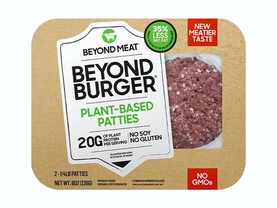Ireland is an open-market economy, meaning businesses operating in this country must be able to compete on the global stage. Rising trade tensions, geopolitical fallouts and currency fluctuations are challenges out of the control of all businesses, but ones that can have a massive impact on the bottom line.
Faced with this reality, Irish businesses have to be lean and efficient to compete successfully in global markets. This is even more so the case for Irish agribusinesses, with the majority of food produced in this country destined for international markets.
In 2018, Ireland exported €13bn of food and drink to more than 180 markets around the world.
Irish beef and dairy companies, which export 90% of their production, must be able to compete with international competitors that are often operating from countries with a much lower cost base or weaker regulatory standards than in the EU.
Wages
Data from the OECD shows average wages in Ireland in 2017 to be just under €42,500 per annum.
This is behind average wages in the US, the Netherlands and Denmark, but ahead of average wages in countries such as Germany, the UK, France, New Zealand and Israel.
Interest rates
As a member of the eurozone, Ireland’s long-term interest rates are comparatively low at 1% thanks to the almost 0% interest rates set by the European Central Bank (ECB). In New Zealand, Australia and Poland, longer-term interest rates are treble this and range from 2.6% to 3.4%.
R&D spend
R&D spending in South Korea equated to almost 4.6% of the country’s GDP, while R&D spending in Sweden and Denmark is above 3% of GDP every year. By contrast, the annual spend on R&D work in Ireland was slightly over 1% of GDP in 2017.
This means Ireland’s spend on R&D is only slightly ahead of Poland as a percentage of GDP and far behind R&D spending in rival countries such as the Netherlands, France and Germany.
Insurance
Ireland has by far the highest insurance premiums among OECD countries. Gross direct insurance premiums, which represent the average insurance spend by individuals and businesses in the country, averaged more than $9,500 per capita in 2017.

Value-added in agriculture
Interestingly, Ireland ranks quite highly for growth in value-added activity in the country’s agri-food sector. In 2017, value-added growth in Ireland’s agri-food sector was just over 5%.
This is only behind Denmark, which achieved value-added growth of 12%, and equal with France.
Australia, Italy and Sweden all saw negative value-added growth in 2017.
Labour productivity index
Ireland’s labour force ranks the highest of selected OECD countries in terms of labour productivity, which is the amount of GDP created for every hour worked.
The Irish labour force ranks ahead of Israel, Germany, the Netherlands and even the US in terms of productivity. Ireland might be a high-wage economy, but employers are getting a return on their investment in highly skilled employees judging by these figures.
Effective corporate tax rate
Alongside this, Ireland’s corporate tax rate for businesses is among the most competitive in the world at 12.5%. The effective corporate tax rate in Ireland, which is the average rate at which pre-tax profits are taxed accounting for grants and state assistance, is 11.8%.
This is far more competitive than the effective corporate tax rate in countries such as the US (34%), Germany (27%), France (33%), the Netherlands (23%), New Zealand (27%) and the UK (19%).






 This is a subscriber-only article
This is a subscriber-only article











SHARING OPTIONS: